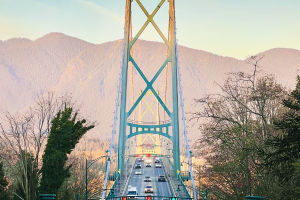Elevated Paths, Urban Growth
As a critical component of modern urban transportation systems, the design and construction of elevated roads are pivotal to urban development and the enhancement of residents' quality of life.
With the acceleration of urbanization, traditional ground transportation systems are increasingly unable to accommodate the growing traffic demands. Elevated roads have emerged as an effective solution to this challenge.
The Role of Elevated Roads
Elevated roads are built above ground to separate traffic flows and improve efficiency. By elevating roadways, conflicts at intersections are reduced, thus alleviating ground traffic congestion.
This separation reduces delays and bottlenecks on surface roads, resulting in smoother traffic flow.
Additionally, elevated roads contribute to shorter travel times within urban areas. They provide fast, unobstructed routes that facilitate quicker travel across the city, significantly improving the overall travel experience for residents.
Elevated roads also offer environmental benefits. Surface traffic congestion not only contributes to air pollution and noise but also negatively impacts the urban environment. Elevated roads help reduce surface traffic flow, leading to decreased exhaust emissions and enhanced air quality.
Moreover, by freeing up ground space, elevated roads allow for the creation of additional green spaces and public areas, thereby improving the living environment for residents.
Advantages and Disadvantages of Elevated Roads
Despite their numerous advantages, elevated roads present certain challenges in both construction and operation. One major drawback is the high construction cost.
Building roads in the air requires substantial investment to ensure structural stability and safety, making the cost of elevated roads significantly higher than that of ground roads.
This includes not only material and construction expenses but also costs associated with impact assessments and planning for traffic flow and urban environments.
Another concern is the potential impact on the visual landscape of the city. Elevated structures can alter the city's skyline and aesthetic appeal, particularly in historical or culturally sensitive areas.
The overall image of the city might be affected, necessitating careful consideration of these factors during the design and planning phases to minimize negative effects on the urban landscape.
Maintenance and management also pose significant challenges. Elevated roads often experience higher traffic pressure, necessitating regular inspections and maintenance to ensure structural integrity and safety. This ongoing requirement involves technical, managerial, and financial resources.
The Impact of Elevated Roads on Urban Development
The construction of elevated roads has profoundly influenced urban development. First, it has facilitated the optimization of urban space.
Elevating traffic allows cities to repurpose ground space for commercial, residential, or public green areas. This transformation enhances the functionality and quality of urban environments.
Second, elevated roads have stimulated economic growth. By improving traffic efficiency and convenience, these roads attract investment and boost commercial activities. They enhance connectivity between business districts and economic centers, fostering economic development.
Additionally, elevated roads drive growth in related industries such as construction, engineering, and maintenance, contributing to the diversification and stability of the urban economy.
Finally, elevated roads enhance the global competitiveness of cities. In an era of globalization, modern cities need transportation infrastructure that not only meets local needs but also connects effectively with international cities. Elevated roads improve a city's traffic capacity and convenience, providing a competitive edge in the global arena.
Elevated roads, as a crucial element of modern urban transportation systems, play a significant role in improving traffic efficiency, reducing congestion, and enhancing environmental quality.
Through thoughtful planning and effective construction, elevated roads support urban development and improve the overall functionality of cities and the quality of life for their residents.


